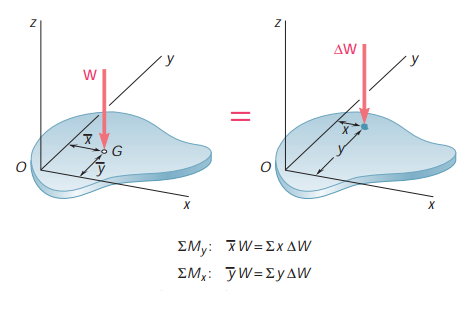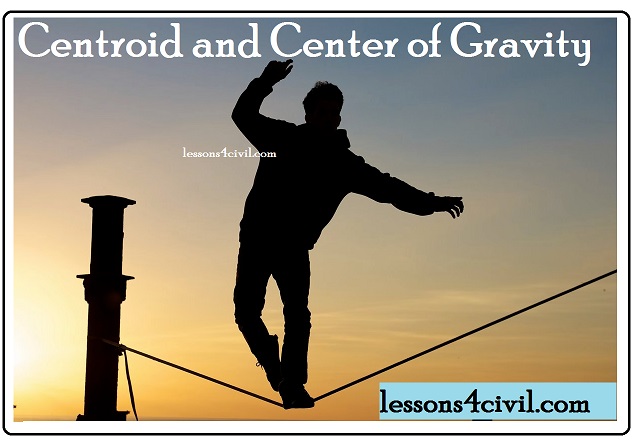Centroid and Center of Gravity
Centroid and center of gravity are two important concepts in statics. However in static problems we always assume that the weight force is a concentrated force, but in reality the force is applied on all particles of the body. in fact we replace that all of these small forces by a single equivalent force (the resultant force). This simplification make the static problems easier to solve.
But the question is where is the point of application of this resultant force? This point of application is called center of gravity. For simple object, such as a rectangle, it is easy to guess that the center of gravity is the intersection of the diagonals. But we need to obtain a mathematical formula to obtain the center of gravity of all complex objects. From this moment on we assume that the object is homogeneous and has uniform thickness.
Consider the coordination of the centroid as x and y. The key to establish a mathematical equation is the equality of the moments. To be more precise if I compute the moment of all tiny particles and add them together it must be equal to the moment of the resultant force.


Simplification of recent equations results in an important equation to determine the center of gravity of the objects. This equation can be used for both lines and areas. Center of gravity, center of mass and centroid are all the same if the density is distributed uniformly. We usually use the letter G to refer the center of gravity.

For frequently used objects, such as semi-circle and triangle, the coordination of centroid is reported in this table. My advice is to memorize the location of centroid of these common object.




Comments